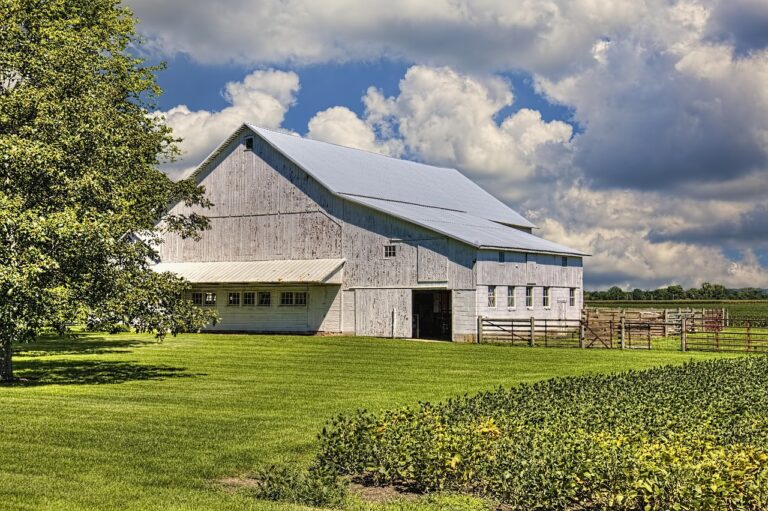Creating a Sustainable Aquaponics System: Combining Fish Farming and Hydroponics
Aquaponics is a sustainable method of food production that combines aquaculture and hydroponics into one integrated system. In this closed-loop system, fish waste provides essential nutrients for plants, which in turn filter and purify the water for the fish, creating a symbiotic relationship between the two components. By harnessing the natural nitrogen cycle, aquaponics eliminates the need for synthetic fertilizers while conserving water and energy.
The key elements of an aquaponics system include a fish tank, a grow bed or rafts for plants, a pump to circulate water between the two, and beneficial bacteria that convert fish waste into plant nutrients. By mimicking natural ecosystems, aquaponics promotes efficient and organic food production with minimal waste. Whether used on a small scale in backyard gardens or on a larger commercial level, aquaponics has the potential to revolutionize the way we grow and consume food.
The Benefits of Combining Fish Farming and Hydroponics
Aquaponics, the innovative integration of fish farming and hydroponics, offers a myriad of benefits for both home gardeners and commercial growers. By combining these two systems, aquaponics creates a symbiotic relationship where fish waste provides essential nutrients for the plants, while the plants purify the water for the fish. This closed-loop ecosystem not only conserves water but also minimizes the need for synthetic fertilizers, making it a sustainable and environmentally friendly method of cultivation.
Furthermore, aquaponics allows for the production of both fish and vegetables in a single integrated system, maximizing space utilization and crop yield. This dual-purpose system creates a diverse range of produce, offering a more varied and nutritious harvest compared to traditional farming methods. Additionally, the natural processes of aquaponics result in healthier and more flavorful crops, making it an appealing choice for consumers looking for high-quality, organic produce.
• Aquaponics creates a symbiotic relationship between fish and plants
• Conservation of water and minimization of synthetic fertilizers
• Production of both fish and vegetables in a single system maximizes space utilization
• Diverse range of produce leads to more varied and nutritious harvest
• Natural processes result in healthier and more flavorful crops, appealing to consumers
Choosing the Right Fish for Your Aquaponics System
When selecting fish for your aquaponics system, it’s essential to consider the environmental conditions they require to thrive. Some popular choices for aquaponics include tilapia, trout, catfish, and perch. These species are known for their adaptability to aquaponic setups and are generally easy to maintain.
Another factor to keep in mind is the growth rate of the fish you choose. Tilapia, for instance, are fast growers and can reach market size relatively quickly, making them a popular choice for aquaponics practitioners looking to yield a harvest in a shorter time frame. Conversely, trout tend to grow at a slower rate, requiring more time and resources before they are ready for harvest. By understanding the growth rates of different fish species, you can better plan and manage your aquaponics system for optimal results.
What is aquaponics?
Aquaponics is a sustainable farming method that combines aquaculture (fish farming) with hydroponics (growing plants in water) in a symbiotic environment.
What are the benefits of combining fish farming and hydroponics in an aquaponics system?
By combining fish farming and hydroponics, aquaponics systems create a closed-loop ecosystem where fish waste provides nutrients for the plants, and the plants help clean the water for the fish. This results in higher yields of both fish and plants, while using less water and eliminating the need for chemical fertilizers.
How do I choose the right fish for my aquaponics system?
When choosing fish for your aquaponics system, consider factors such as the size of your tank, water temperature requirements, feeding habits, and compatibility with the plants you wish to grow. Popular fish species for aquaponics include tilapia, trout, and perch.
Do I need to consider local regulations or permits when choosing fish for my aquaponics system?
Yes, it is important to check with local authorities regarding regulations or permits for keeping certain fish species in your area. Some fish species may be restricted or require special permits for aquaponics use.
How do I ensure the health and well-being of the fish in my aquaponics system?
To ensure the health of the fish in your aquaponics system, monitor water quality regularly, provide proper filtration and aeration, and feed them a balanced diet. It is also important to observe the fish for any signs of illness or stress and take prompt action if needed.







